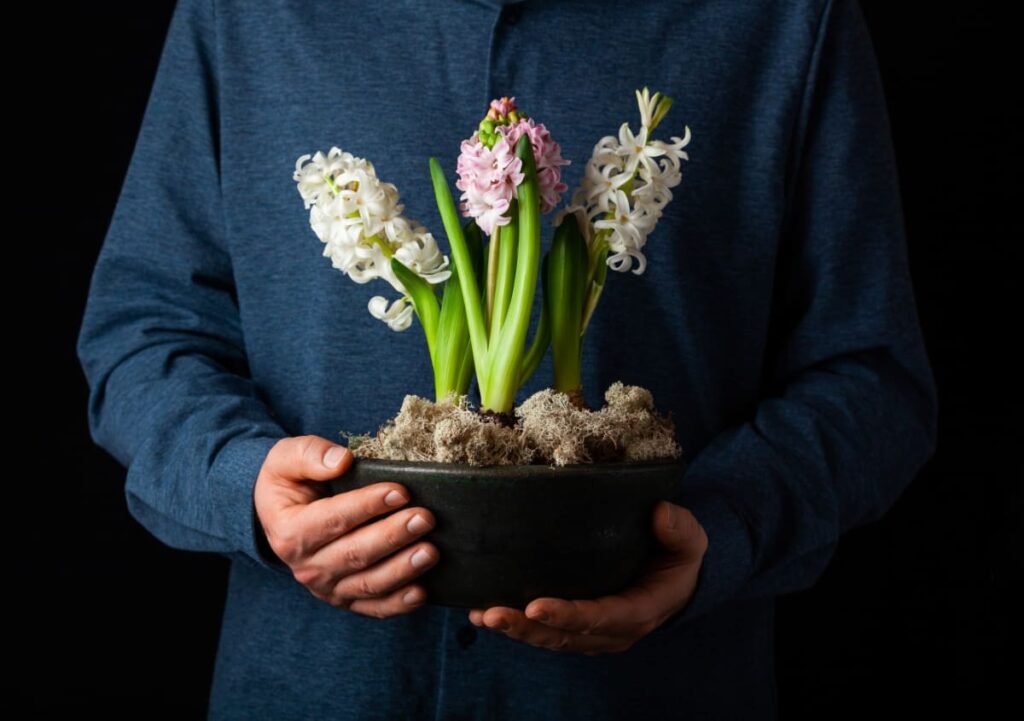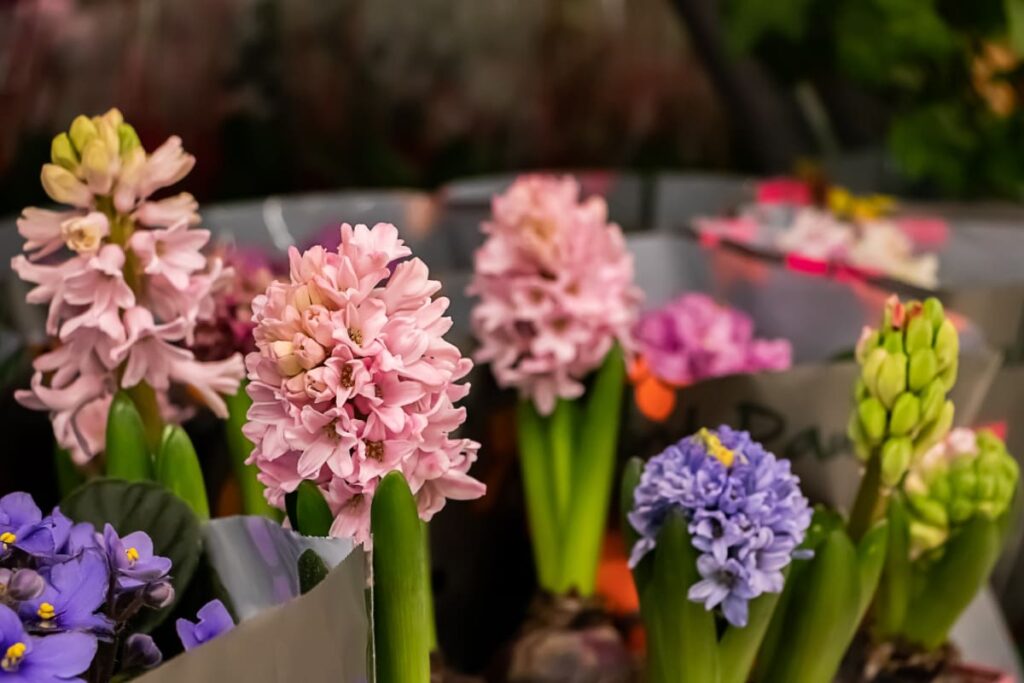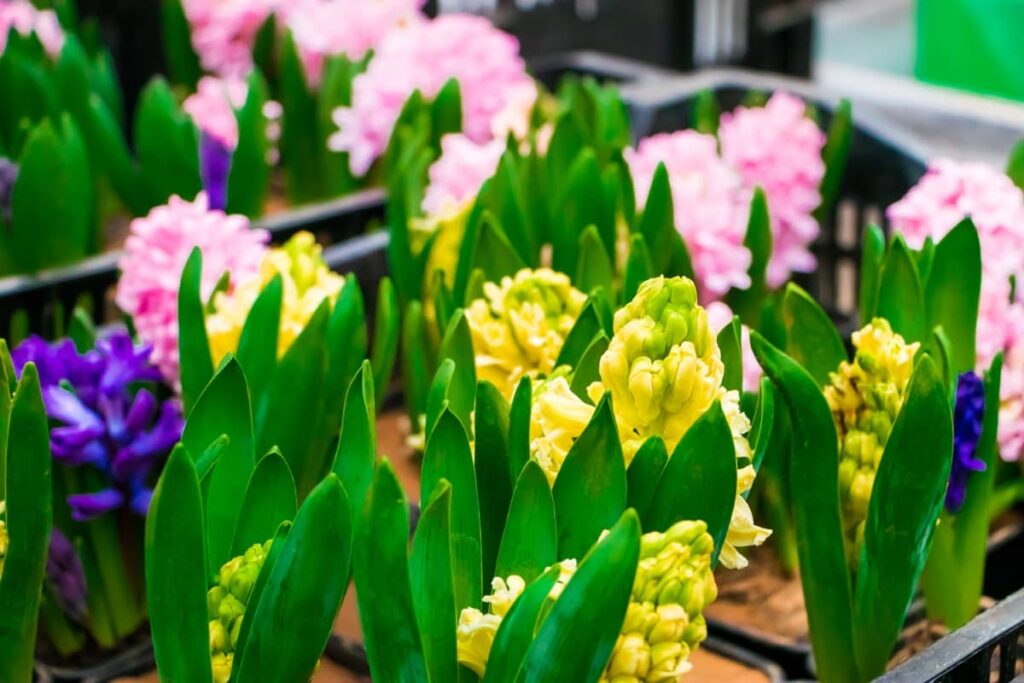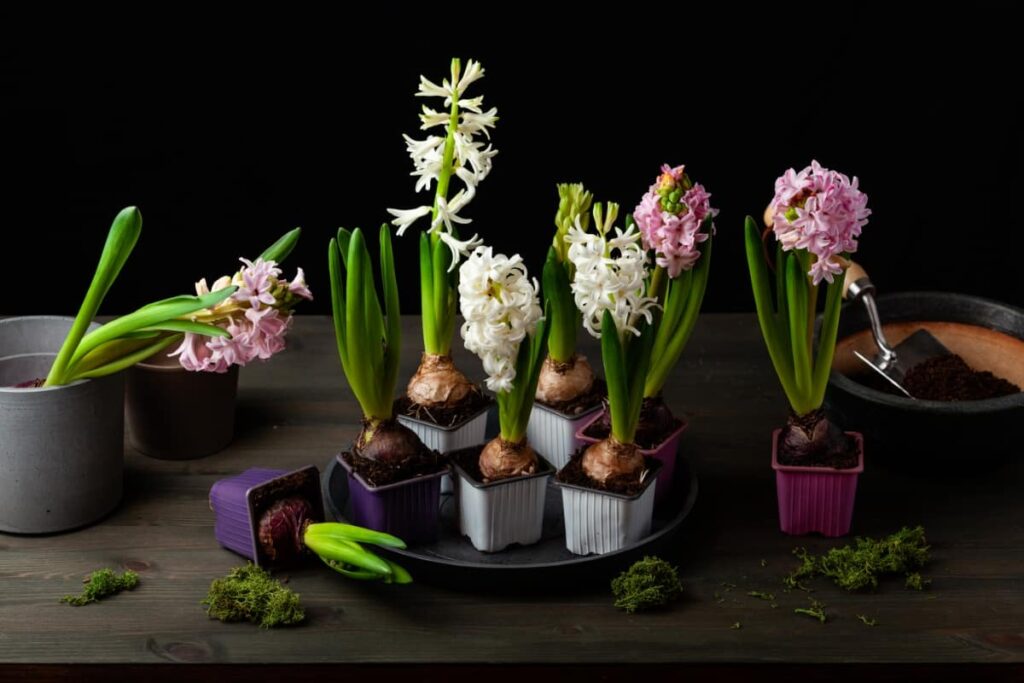They are fragrant flowering plants belonging to the Asparagaceae family, specifically the subfamily Scilloideae, and their scientific name is Hyacinthus orientalis. If you’re looking to add a touch of elegance and charm to your indoor space, Hyacinths are the perfect choice.

Selecting the Right Hyacinth Bulbs for Indoor Growth
Choose varieties that are specifically suited for indoor cultivation, as they tend to thrive better in a controlled environment. Consider the color and fragrance you desire, as different Hyacinth varieties offer a range of hues, from vibrant blues and purples to whites.
Some popular choices include the vibrant Blue Jacket with its deep blue blooms that can add a pop of color to any room. If you’re looking for something more delicate, the Pink Pearl variety might be just what you need with its soft pink flowers that exude elegance. For those who prefer a classic white bloom, the Carnegie Hyacinth is a perfect choice that brings a beautiful addition to your indoor space.
Potting and Soil Requirements for Hyacinths
Hyacinths require well-draining soil to prevent waterlogging, which can lead to root rot. A good potting mix for Hyacinths should be rich in organic matter and have good drainage. Consider a blend of peat moss, compost, and perlite for optimal growth. Hyacinths grow best in slightly acidic to neutral soil with a pH scale of 6.0 and 7.0.
Optimal Lighting Conditions for Indoor Hyacinths
Hyacinths thrive in bright, indirect sunlight. Placing them near a south-facing window where the plants can get plenty of natural light without being exposed to harsh direct sun rays is ideal. Remember to adjust the lighting duration based on the specific needs of your Hyacinths – typically around 12-14 hours per day during their growing phase. If you notice these symptoms, try moving them closer to a source of brighter light or adjusting the positioning of your grow lights accordingly.
In case you missed it: 10 Best Natural Pesticides for Indoor Plants: 100% Effective to Kill Bugs on Houseplants

Watering Techniques for Healthy Hyacinth Plants
When it comes to watering your indoor Hyacinth plants, finding the right balance is key. Overwatering can affect root rot while underwatering the Hyacinth plants can cause the bulbs to dry out and fail to bloom properly. Hyacinths prefer moist but well-draining soil, so water them thoroughly.
Make sure excess water in the Hyacinth plant can easily drain out of the pot by poking holes in the bottom or using a container with drainage. Avoid getting water on the Hyacinth plant leaves or flowers, as this can encourage fungal diseases. Adjust your watering based on environmental factors like humidity levels and seasonal changes for optimal plant health.
Temperature and Humidity Considerations
Maintaining the right temperature levels is crucial for the health of your indoor Hyacinths. These delicate plants thrive in cool temperatures ranging from 10-18°C during the day and slightly cooler at night. Avoid placing your Hyacinth plant near heat sources or drafts, as sudden temperature fluctuations can stress the plant. Keeping a consistent room temperature will help promote steady growth and blooming.
Hyacinths also prefer high humidity, which can be challenging to achieve indoors, especially during winter months when central heating dries out the air. To increase humidity, consider placing a tray filled with water near the plant. Misting your Hyacinth leaves occasionally can also help boost moisture levels around the plant.
Fertilizing Indoor Hyacinths for Vibrant Blooms
Fertilizing is crucial for vibrant blooms. Choose a balanced fertilizer to provide essential nutrients without overfeeding. Feed the plants every 2-4 weeks during the growing season by using a water-soluble fertilizer diluted to half strength. Over-fertilizing can lead to leggy growth and decreased flowering.
In case you missed it: Top 12 Best Pet-Friendly Indoor Plants: Exploring Safe Indoor Plants for Cats, Dogs, and Other Animals

During the blooming period, switch to a low-nitrogen fertilizer high in phosphorus to support flower production. Slow-release fertilizers are also an option for steady nutrient release. Remember not to fertilize after the blooming period, as Hyacinths go dormant. With proper fertilization, your indoor Hyacinths will reward you with beautiful and healthy blooms throughout their growth cycle.
Managing Pests and Diseases in Hyacinth Plants
Some common Hyacinth plant pests that can affect these plants include spider mites and bulb flies. These pesky critters can damage the leaves and flowers of your Hyacinth if left unchecked. Diseases like gray mold, powdery mildew, and bacterial soft rot can also pose a threat to your indoor Hyacinth plants. Gray mold manifests as fuzzy gray patches on the leaves, while powdery mildew appears as white powdery spots. Bacterial soft rot causes the bulbs to become mushy and discolored.
Aphids are another nuisance that can target Hyacinths by feeding on their sap. Introducing natural predators like ladybugs or washing them off with a gentle spray of water can help keep these tiny pests at bay. To prevent these issues, regularly inspect your plants for any signs of infestation or disease. If you notice any problems, promptly remove affected plant parts and consider using natural remedies or insecticidal soaps to combat pests. Proper care and attention will help keep your indoor Hyacinths healthy and thriving all year round.
Forcing Hyacinths for Winter Blooms
Forcing Hyacinths for winter blooms is a great way to bring some color and fragrance into your home during the colder months. Please start by selecting healthy Hyacinth bulbs and placing them in a cool, dark location for about 12 weeks to simulate winter conditions. This process helps the bulbs develop roots and prepares them for blooming indoors. After the chilling period, move the bulbs to a warm, well-lit area to encourage growth. Keep the soil moist, allowing the plants to thrive and produce stunning blooms.
In case you missed it: Best Indoor Apartment Plants for Small Spaces: Low-Maintenance, Edible, Flowering, Succulents, and Cacti

Post-Bloom Care and Bulb Storage Strategies
After your indoor Hyacinths have finished blooming, it’s time to shift your focus to post-bloom care and bulb storage strategies. Once the flowers start to fade, snip them off carefully to encourage the plant’s energy to go back into the bulb for future growth. When all foliage has turned brown, gently lift the bulbs from their containers. Clean excess soil from them and allow them to air dry completely in a cool, dark place before storing.
Bulbs prefer a dormant period before they are ready for regrowth – store them in a mesh bag or paper sack in a well-ventilated area at around 10°C. Indoor Hyacinths are a delightful addition to any home, bringing bursts of color and fragrance all year round. With these planting tips, you can enjoy the beauty and fragrance of Hyacinths in your home year-round.
- Profitable Village Farming Business Ideas in 2024
- High-Yield Aquaculture: Fast-Growing Fish for Farming
- Effective Fish Pond Construction Techniques for Beginners
- Irrigation and Water Management in Pineapple Farming
- Blossom to Harvest: Mastering Flowering and Pollination in Papaya Farming
- Pig Fattening Essentials: From Selection to Sale for Beginners
- Raising Wagyu Cattle: A Complete Guide for Premium Beef Production
- Soil Types and Their Water Holding Capacity
- Optimizing Irrigation Schedules for Coconut Groves for Enhanced Yield
